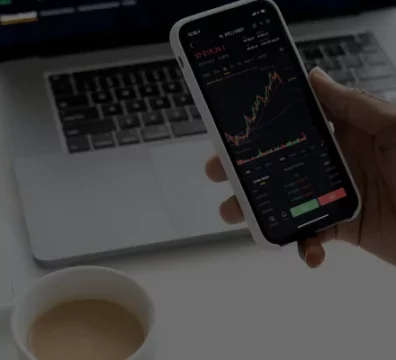The Psychological Edge of Knowing Your Exposure
Most traders obsess over entries and indicators, but what really separates professionals from amateurs isn’t a strategy — it’s risk management.
If your risk is inconsistent, your results will be too. Random lot sizes, oversized trades, and inconsistent stop losses all create an equity curve that looks like chaos. The fastest way to build confidence in trading is not by winning every trade — but by risking the same way every time.
Let’s break down why inconsistent risk kills your account and how consistent risk builds confidence, expectancy, and long-term growth.
Why Inconsistent Risk Management Is So Dangerous
Overleveraging Destroys Equity
Many traders risk 10%, 20%, even 50% of their account on a single trade. Even if you win a few, one loss can erase weeks or months of progress.
Random Risk = Random Results
If one trade risks $50, the next risks $500, and another risks $200, your results are meaningless. You can’t measure expectancy when every trade has different weight.
Emotional Rollercoaster
When your risk changes trade to trade, so do your emotions. Small wins feel wasted, big losses feel devastating. This inconsistency fuels fear and revenge trading.
The Professional Approach to Risk
Professionals don’t leave risk to chance. They treat trading like a casino: the edge is small, but by betting consistently, the house always wins.
Fixed Fractional Risk
The most common professional model is risking 1–2% of your account per trade. This ensures that even losing streaks won’t wipe you out.
Expectancy as the Key Metric
Confidence doesn’t come from one win — it comes from knowing that over 100 trades, your system has a positive expectancy. Expectancy = (Win% × Avg Win) – (Loss% × Avg Loss).
If your risk is consistent, expectancy is measurable. If it’s random, expectancy doesn’t exist.
How to Calculate Consistent Risk
The Formula
Position Size = (Account Risk Per Trade) ÷ (Stop Loss Distance in Pips or Points × Value per Unit)
% vs Fixed Dollar Risk
- % Model: Always risk, say, 1% of your balance. Your trade size adjusts as your account grows.
- Fixed $ Model: Always risk a set dollar amount (e.g., $100 per trade). Keeps your mental comfort level steady.
Adjusting for Volatility
- Forex: base position size on pip value.
- Crypto: adjust for extreme volatility — smaller % risk often safer.
- Futures: contracts have fixed values — size contracts carefully.
- Options: treat premium paid as 100% at risk.
Practical Tools to Stay Consistent
Position Sizing Calculators
Use online calculators or TradingView scripts to size your trades automatically.
Pre-Trade Checklists
Before clicking “buy” or “sell,” confirm:
- Risk % is consistent.
- Stop loss is in place.
- Reward is at least 2x risk.
Journaling Risk Per Trade
Track your risk size and whether you stuck to the rules. This accountability builds discipline.
Max Daily Drawdown Alerts
Set alerts if you lose more than 3–4% in a day. This prevents tilt trading.
Building Confidence Through Consistency
When your risk is consistent, your emotions stabilize.
- Steady Equity Curve: Losses don’t feel catastrophic, wins don’t inflate your ego. Growth is smoother.
- Trust in Your Edge: By risking the same amount every time, you can actually measure whether your system works.
- Survival Through Drawdowns: Losing streaks don’t kill your account — they become just part of the process.
Case Study
- Trader A risks randomly — sometimes $50, sometimes $500. Their account equity spikes and crashes like a rollercoaster.
- Trader B risks 1% per trade, every trade. Their equity grows steadily with small drawdowns.
Confidence doesn’t come from winning — it comes from knowing you won’t blow up.
Final Thoughts: Confidence Isn’t Luck — It’s Risk Discipline
Most traders fail not because their strategies are bad, but because their risk management is inconsistent.
By committing to consistent risk — whether percentage or fixed dollar — you transform trading from gambling into a business. Your emotions stabilize, your expectancy becomes measurable, and your confidence grows.
The secret isn’t in predicting the market. The secret is in controlling risk every single time.
